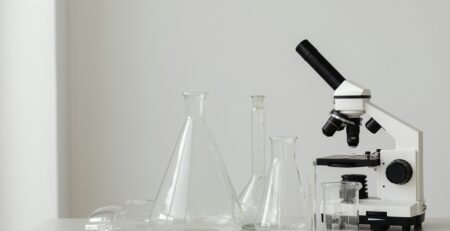29
Aug
The Top 5 Beaker Sets Every Australian School Lab Should Have
Science classrooms across Australia rely on beakers for everything from simple solution mixing to heating experiments. Choosing the right beaker sets for schools is not just about affordability — it’s about safety, durability, and supporting hands-on STEM learning.
1. Starter Sets with Low-Form Beakers
Low-form borosilicate beakers (50 mL – 1000 mL) are the classroom standard. Their wide base reduces tipping accidents, while etched graduations support approximate measurements. Perfect for introducing students to basic solution handling.
2. Tall-Form Beakers for Advanced Classes
Tall-form beakers help demonstrate evaporation, distillation, and reduced splash risk in senior chemistry classes. Their narrower design allows easier observation of reaction changes, making them a staple for high school and pre-university courses.
3. Graduated Polypropylene Beakers
For younger students or introductory science, polypropylene beakers are safer alternatives. Shatterproof and resistant to most acids and alkalis, they reduce hazards in busy classrooms while still allowing volume demonstrations.
4. Large Capacity Beakers for Demonstrations
Beakers in the 2 L – 5 L range are invaluable for teacher-led demonstrations. They allow clear visibility from across the room, making them ideal for practical lessons where the entire class observes experiments at once.
5. Comprehensive Mixed Beaker Sets
A combined set of borosilicate and polypropylene beakers in multiple sizes ensures flexibility. Schools that invest in comprehensive sets can adapt to diverse curriculum needs — from heating reactions to teaching sustainable lab practices.
Classroom Anecdote
A Melbourne secondary school replaced its plastic-only beaker sets with a mix of BORO 3.3 and polypropylene. Within two terms, teachers reported fewer breakages during heating experiments and improved engagement as students learned the differences between materials firsthand.
Sustainability in Education
By incorporating borosilicate glass beakers, schools reduce reliance on disposable plastics. A typical Australian secondary school can save hundreds of single-use beakers annually, aligning with state education department sustainability targets and encouraging students to think critically about waste.
FAQs
Are borosilicate beakers safe for secondary school use?
Yes, especially low-form designs. With proper supervision, they are safe and provide real-world lab experience.
Should schools still use plastic beakers?
Polypropylene beakers remain valuable for younger students and non-heating activities, offering safety and chemical resistance.
What’s the best set for a school starting fresh?
A mixed starter set with both borosilicate and polypropylene across common volumes (50 mL – 1 L) provides maximum flexibility.
Comparison Table – Beaker Sets for School Labs
| Set Type | Best For | Key Benefits |
|---|---|---|
| Low-Form BORO 3.3 Glass | General classroom use | Stable, heat-resistant, reusable |
| Tall-Form BORO 3.3 Glass | Senior chemistry | Reduced splash, visible reactions |
| Polypropylene (PP) | Junior classes | Shatterproof, acid/alkali resistant |
| Large Capacity Glass | Teacher demonstrations | High visibility, large-scale mixing |
| Mixed Beaker Sets | Schools with full programs | Flexibility + sustainability balance |
References
- ISO 3585: Borosilicate Glass Standards
- ISO 7056: Plastics Laboratory Ware Standards
- Australian Curriculum – Science Education Guidelines
- Department of Education Victoria – Sustainability in Schools Framework

